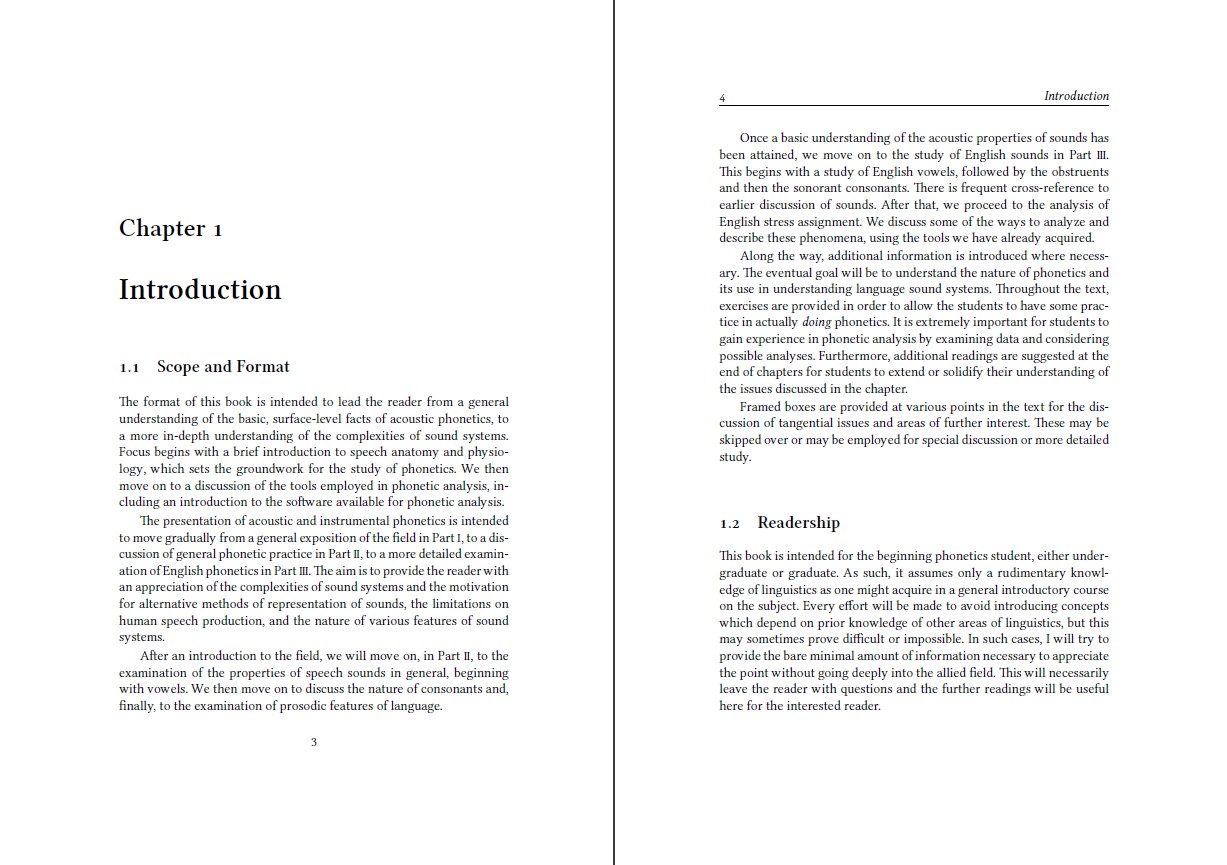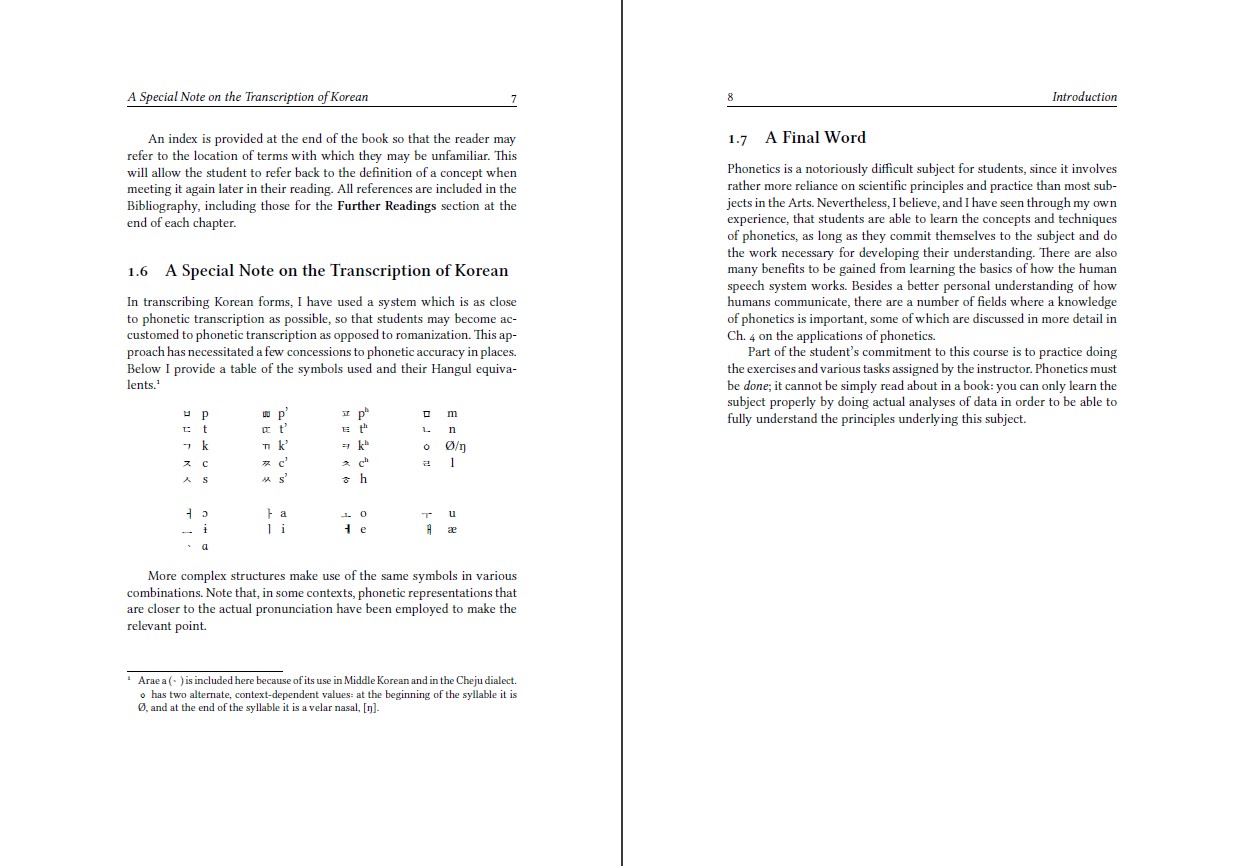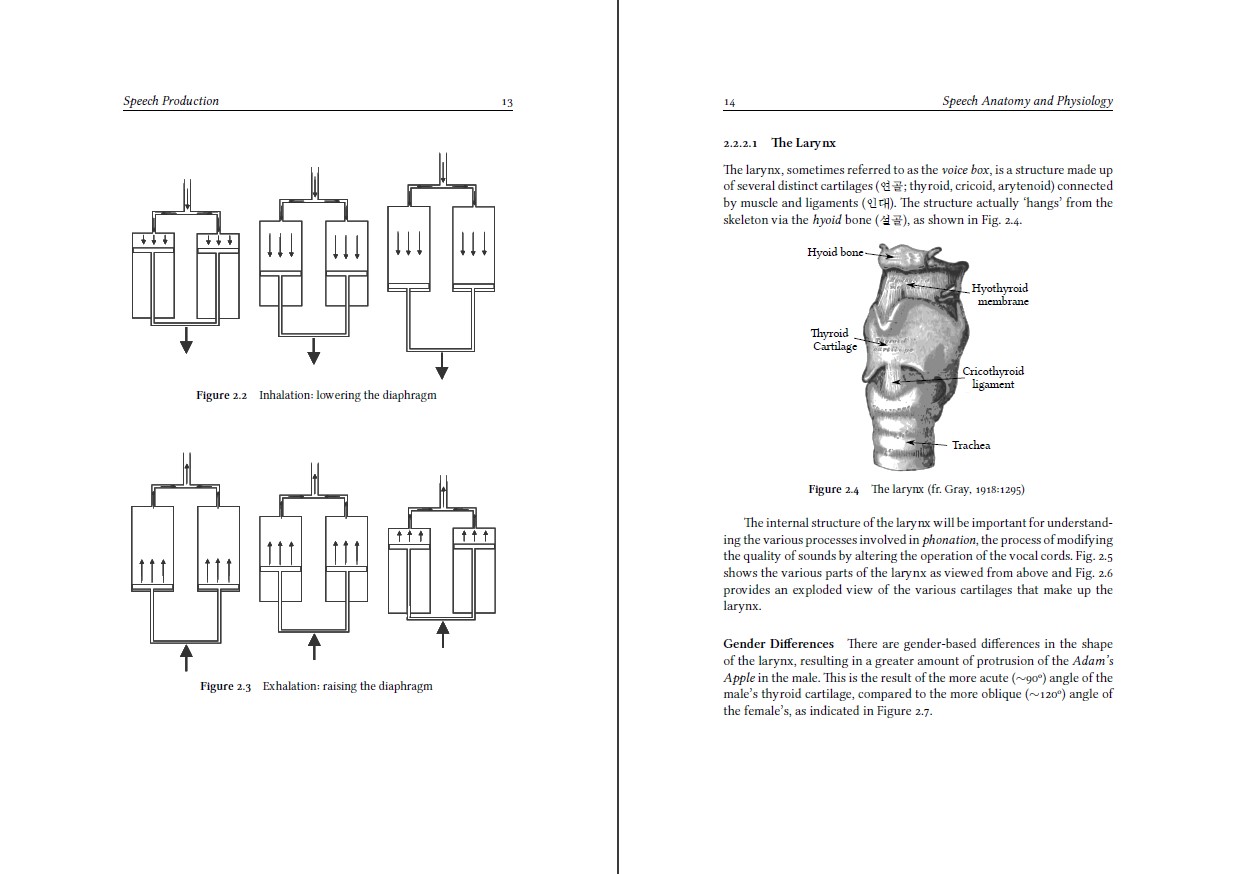Preface xv
Abbreviations xvii
I General Phonetics
1. Introduction
1.1 Scope and Format
1.2 Readership
1.3 Software and Equipment
1.4 Data Sources
1.5 Terminology and Notation
1.6 A Special Note on the Transcription of Korean
1.7 A Final Word
2 Speech Anatomy and Physiology
2.1 Speech-related Properties
2.2 Speech Production
2.3 Hearing
2.4 Conclusion
3 Acoustic Phonetics
3.1 The Physics of Sound
3.2 Equipment for Phonetic Analysis
3.3 Reading Spectrograms
4. Applications of Phonetics
4.1 Phonetic Transcription
4.2 Other Forms of Representation
4.3 Phonetic Fieldwork
4.4 Speech Recognition and Synthesis
4.5 Speech-Language Pathology and Audiology
4.6 Forensic Phonetics
II The Study of Sounds
5 Vowels and other Syllabic Segments
5.1 The Nature of Vowels
5.2 Vowel Criteria
5.3 Cardinal Vowels
5.4 Acoustic Properties of Vowels
5.5 Secondary Articulations
5.6 Diphthongs
5.7 Syllabic Sonorants
6 Consonants I
6.1 Airstream Mechanism
6.2 States of the Glott|is
6.3 Manners of Articulation
6.4 Analyzing Consonants
7 Consonants II
7.1 Places of Articulation
7.2 Secondary Articulations
7.3 Acoustic Properties of Consonant Place
8 Prosodic Analysis
8.1 Tone
8.2 Stress
8.3 Pitch Accent
8.4 Intonation
III The Sounds of English
9 English Vowels
9.1 The Vowels of English
9.2 English Diphthongs
9.3 Syllabic Sonorants in English
10 English Obstruents
10.1 English Plosives
10.2 English Fricatives
10.3 English Affricates
11 English Sonorants
11.1 Nasal Stops
11.2 Rhotics
11.3 Laterals
11.4 Semivowels
12 English Stress
12.1 English Stress Assignment
12.2 Acoustic Correlates of Stress in English
12.3 Stress in British and American English
Glossary
Bibliography
Index















